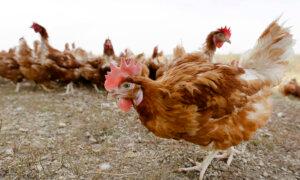Dairy cows infected with highly pathogenic avian influenza A, or H5N1, in five U.S. states have died or been slaughtered by farmers because they did not recover, according to state officials and academics.
In South Dakota, a dairy farm with 1,700 cows sent a dozen animals to slaughter after they did not recover from the virus and killed another dozen that contracted secondary infections, said Russ Daly, a professor at South Dakota State University and a veterinarian for the state extension office who spoke with the farm.
“You get sick cows from one disease, then that creates a domino effect for other things, like routine pneumonia and digestive issues,” Mr. Daly said.
A farm in Michigan culled about 10 percent of its 200 infected cows after they failed to recover from the influenza, also known as bird flu, according to Phil Durst, an educator with Michigan State University Extension who spoke with that farm.
In Colorado, some dairies reported culling cows with the bird flu because they did not return to milk production, said Olga Robak, spokesperson for the state Department of Agriculture. Cows infected with the influenza typically display symptoms such as reduced milk production and lethargy.
Ohio Department of Agriculture spokesperson Meghan Harshbarger said infected cows have died in Ohio and other affected states, mostly due to secondary infections.
The Texas Animal Health Commission also confirmed that cows have died from secondary infections at some dairy operations with avian flu outbreaks.
Officials could not provide figures for the number of statewide cow mortalities.
New Mexico’s state veterinarian, Samantha Uhrig, said farmers increasingly culled cows due to decreased milk production early in the outbreak, even before the United States confirmed that bird flu was infecting cattle. Culling decreased as farmers learned that most cows gradually recovered, she said.
“No cows in Iowa have been depopulated,” Don McDowell, director of communications for the Iowa Department of Agriculture and Land Stewardship, told The Epoch Times in an email. A spokesman for the Minnesota Board of Animal Health said there’s no known deaths of cows in the state related to H5N1.
A U.S. Department of Agriculture (USDA) spokesperson said the agency knew of a few deaths in cows in the United States but that the vast majority of the cattle recovered.
The USDA has in briefings and press releases said that cows infected with the avian influenza “generally recover well, and there is little mortality associated with the disease.”
Government personnel at the slaughterhouse “identified signs of illness in the positive animal during post-mortem inspection and prevented the animal from entering the food supply,” the USDA said. It said the meat did not enter the food supply, which should “provide further confidence that the food safety system we have in place is working.”
Scientists both inside and outside the government are still trying to figure out how the virus is spreading among cows. Both bird-to-cow and cow-to-cow transmission are happening, according to the USDA, but it’s unclear how the virus is being spread.
Person-to-person transmission has not yet been seen, the U.S. Centers for Disease Control and Prevention says. The agency deems the risk to the public as low.








